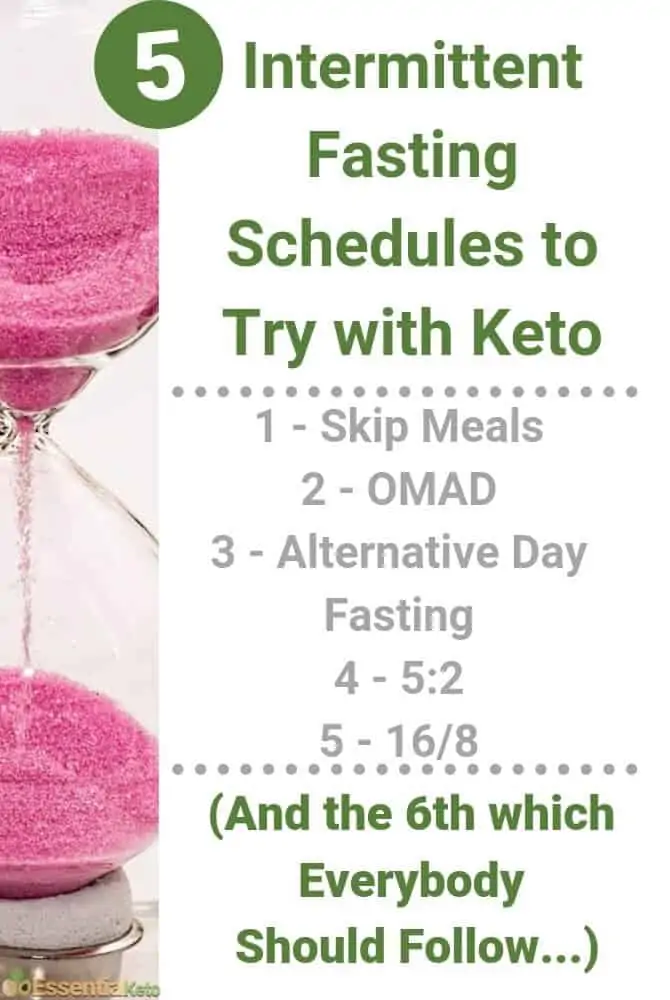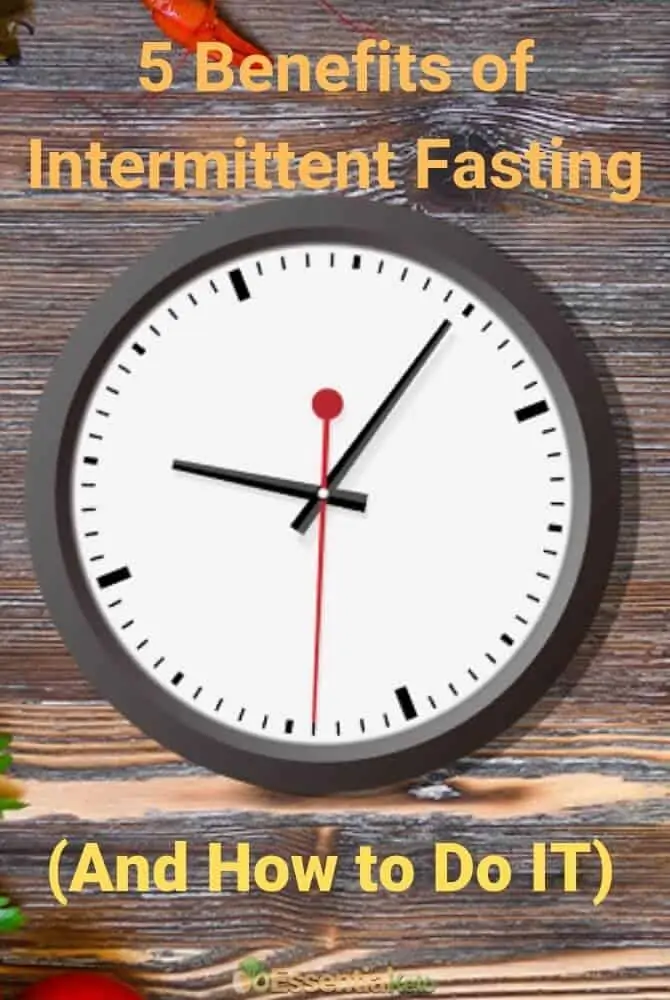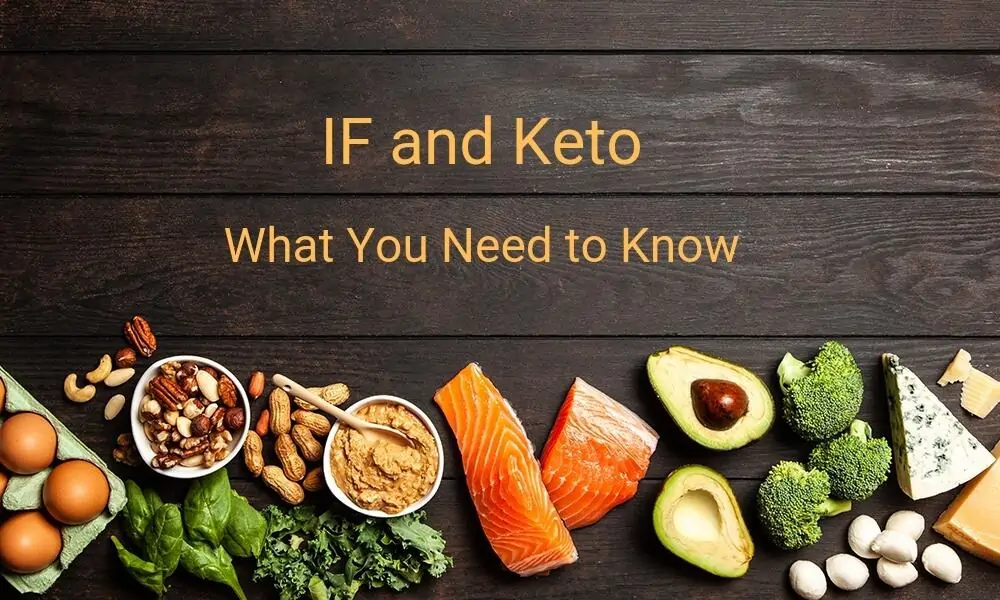Intermittent Fasting: What You Need to Know
Everything you need to know about intermittent fasting when you start out on a keto diet or want to take your keto lifestyle to the next level.

One of the main benefits of a ketogenic diet, is not being hungry all the time. This leads many of us to automatically adopt some kind of intermittent fasting routine.
Are you doing that and want to better understand it? Or are you considering intermittent fasting as the next step in your keto journey and want to know how to do it?
Well -
Today we are lucky enough to have Sofia Norton from Kiss My Keto give us her take on what intermittent fasting is and why it fits so naturally with keto.
Over to Sofia...
Did you know that our ancestors practiced intermittent fasting due to food scarcity? Back in the day, people were hunter-gatherers, and this meant that they hunted for food while their bodies were in a fasted state.
Little do we realize that this ancient practice is also a powerful tool to lose weight, prevent diabetes, and boost overall health.
The sad part is that many people nowadays hold limiting beliefs about fasting - they associate it with starvation and believe that it leads to overeating, slowed metabolism, and nutrient deficiencies. These things are simply untrue.
In today’s guide, we’re going to tackle what intermittent fasting is, ways to do it, intermittent fasting benefits, the relationship between the keto diet and IF.
What Is Intermittent Fasting?
Intermittent fasting or IF is an eating pattern where a person alternates between abstaining from food and eating. Basically, you’re going to pick a certain time frame where you fast.
For example, one of the ways to do intermittent fasting (and this one’s the easiest) is to skip the first meal of the day. Another method is to fast for 16 hours and eat during an 8-hour window.
Our modern society where food access has become convenient makes us believe that we always need to eat, even when we don’t feel hungry at all!
As you can see, the things around us affect our attitude towards food and health - our culture of convenience, friends, family, and workplace.
If you look at history, you would realize that humans in the past have fasted not just because of food scarcity, but also for religious reasons.
By allowing our digestive system to rest through IF, we’re giving it a chance to heal, rejuvenate, and focus on detoxifying.
Methods/Schedules
What’s great about intermittent fasting is that there are various ways to do it.
Since you’re not limited to a single method, this gives you an opportunity to experiment with what works best for your schedule. Also, one IF method may make you feel at your best while another may not. Below are 5 options:

1 - Skipping Meals
Meal skipping is the easiest way to get started on intermittent fasting.
This is convenient when you don’t feel hungry at all, are hurrying to work in the morning, or simply want to take your mind off of food and do something productive with your time.
You can basically skip any meal of the day - breakfast, lunch, or dinner. Many people prefer skipping breakfast. Some would have a light snack in the afternoon and skip dinner.
2 - One Meal a Day (OMAD)
The OMAD intermittent fasting method entails eating one meal a day and fasting for the remaining 23 hours. OMAD can be extreme for someone who’s new to the keto diet and fasting.
It may trigger hunger and make a person lose control to the point of eating a large unhealthy meal. During your eating period, it’s important to choose healthy fats such as avocados, nuts, and fatty fish.
3 - Alternate Day Fasting
As the name implies, alternate-day fasting means fasting for just one day and eating like you normally would the next day. For example:
You may also try the modified approach where you eat on fasting days but limit your intake to 500 calories only.
4 - The 5:2 Diet
The 5:2 intermittent fasting method requires you to fast for only two days a week and eat normally for five days. There is no rule as to which days of the week you need to fast and eat, which means that you’re free to pick the days.
Rather than not eating at all, you may also restrict your calorie intake to 500 calories for the two fasting days.
Your source of calories should be healthy and help you feel fuller. Examples are eggs, fattier meat cuts, and cauliflower rice.
5 - The 16/8 Method
A lot of people do better with the 16/8 method since they can eat within an 8-hour window and fast for 16 hours.
You can think of it as fasting from 3:00 pm to 7:00 am the next day. That way, you can enjoy breakfast (if you’re a breakfast eater), take lunch, and enjoy a light snack before 3:00 pm.
However, you’re free to decide which hours of the day you can fast. While food isn’t allowed during your fasting period, you can drink black coffee or unsweetened tea. You may also exercise.
(If none of this is for you, then scroll down to read more about 12/12.)
5 Benefits of Intermittent Fasting
Intermittent fasting positively impacts your body in many ways. Let’s explore five of them below:

1 - Better Gut Health
Did you know that fasting intermittently benefits your gut microbiome?
Your gut health is more important than you think since its microbiome affects your immune system, brain health, and your likelihood to avoid or develop conditions like heart disease, certain cancers, and diabetes.
A study also showed that intermittent fasting promotes better gastrointestinal motility by boosting the activity of the parasympathetic innervation of your gut.
2 - Fat Loss
Not only will your gut heal, but you’ll also lose weight. Intermittent fasting allows you to reduce your calorie intake for the week.
Another way it promotes fat loss is its ability to increase levels of human growth hormone (HGH) secreted by the pituitary gland. HGH enhances your metabolism, your body’s ability to burn fat, and workout performance.
Intermittent fasting will also deplete your body’s stored sugar (glycogen) and let it burn fat for energy.
3 - Autophagy
The process of autophagy happens when the body is stressed or is in a fasting/starvation mode.
If you don’t know what autophagy is, it’s your body’s natural way of cleaning itself of dead and worn-out cells. We want this process because we know that damaged cells lead to disease.
Autophagy can suppress the growth of tumors and has an anti-aging effect.
4 - Improved Insulin Sensitivity
Type 2 Diabetes is a condition where your body develops insulin resistance.
Since your cells don’t respond well to insulin, glucose cannot enter your cells and therefore builds up in the bloodstream. This explains why your blood glucose increases to above-normal levels.
The beauty of intermittent fasting is that it increases your insulin sensitivity. A study demonstrated that IF can greatly reduce blood glucose to healthy levels, and may even play a role in the reversal of type 2 diabetes.
5 - Brain Performance
Do you want to improve your cognitive function? Intermittent fasting is a great way to achieve that.
IF stimulates the production of brain-derived neurotrophic factor (BDNF), a protein that keeps your brain cells strong and able to survive.
Higher BDNF levels through intermittent fasting have many benefits: Protection against neurodegenerative diseases like Alzheimer’s disease and Parkinson’s disease, brain plasticity, and improved mental clarity.
IF and the Ketogenic Diet
As you know the ketogenic diet is a dietary approach where you reduce your carbohydrate intake while increasing your fat intake. Carb reduction burns your glycogen stores so you can tap into your fat stores for fuel.
As your body metabolizes fat, fatty acids are converted into ketone bodies. Ketones serve as your alternative fuel. They’re also much more effective than glucose.

Intermittent fasting is similar to the keto diet in that it triggers ketosis, fat burning, and autophagy, which is why IF pairs well with keto. When used together, positive health and fitness effects are boosted.
Doing IF to ease your way into ketosis is great.
However, it’s good to know that it’s easier to fast intermittently when you’re already keto-adapted since, at this time, your body is already used to going without food for longer.
For instance, if you follow a cyclical ketogenic diet where you load up on carbs prior to a workout or during the weekend, you can use IF to re-enter ketosis.
Here’s a quick tip: Instead of allowing yourself to eat traditional bread (which is normally high in carbs) when you’re doing cyclical keto, why not have a low-carbohydrate bread that tastes as good as the regular stuff?
That way, you can enjoy generous portions without worrying about your macros.
Final Thoughts
Intermittent fasting or IF has plenty of benefits, from healing your gut to improving your brain performance. IF has been practiced by our ancestors, but it isn’t something that most people are aware of.
If you’re planning to go on a keto diet or have been following it already, doing intermittent fasting will boost results. Remember to choose an IF method that suits you.
There you have it, thank you Sofia!
And yes, if you are not into this fasting thing at all, then you should at least follow the 12/12 rule.
Eat for 12 hours, don't eat for 12 hours. So if you have your last meal at 7 at night, don't eat before 7 in the morning.
So...
When you look at it like that, it is not at all that hard to move to 16:8. Eat your last meal at 7 and refrain from eating until 11 in the morning. Or enjoy a keto breakfast and then have your last meal or a snack in the afternoon.
As Sofia said, work out what works best for your body and your lifestyle!
If you have any questions, please leave them in the comments below. We’d also love to hear about your experiences with IF and how you incorporate it into your ketogenic lifestyle.
Author’s Bio: Sofia Norton from Kiss My Keto
Driven, dedicated and team-oriented professional with more than 6 years of experience providing wellness and nutritional support in various capacities. After Sofia learned about "food deserts" as a kid, she became determined to devote her life to making healthy foods accessible to everyone, regardless of income or location.
Sofia has traveled around the world, teaching nutrition to communities in extreme poverty. In her spare time, Sofia loves long bike rides and exploring local farmer's markets.

